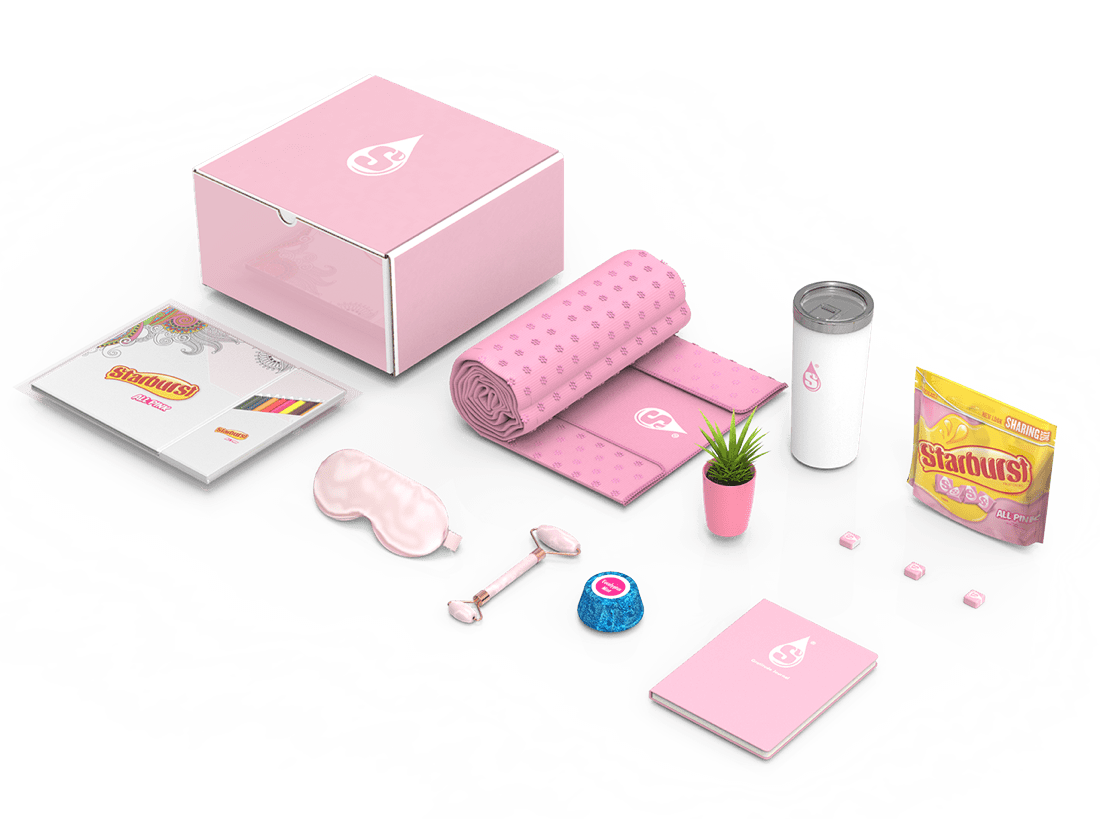NYT acquires ‘Serial’ production company, Nike braces for layoffs, and KFC crocs are coming soon
Also: Hershey tweets visuals highlighting second-quarter results, Starburst celebrates self-care with branded kit, Facebook examines racial bias and more.
Hello, communicators:
The long-awaited Kentucky Fried Chicken x Crocs “Classic Clogs” are available to purchase starting July 28:
Coming soon! Kentucky Fried Chicken x @Crocs Classic Clogs are available on July 28th. The saying is true: good things and Crocs that look like a bucket of fried chicken come to those who wait. https://t.co/oYeRikFuup pic.twitter.com/Up6EVjSjKs
— KFC (@kfc) July 23, 2020
The collaboration’s announcement garnered social media buzz and headlines, and the companies are hoping to do the same, now that the product is finally here. The effort highlights the power of partnerships—which have become even more important as retail chains and other organizations look for new revenue streams.
Here are today’s top stories:
NYT acquires ‘Serial’ while Spotify announces video podcasts
The New York Times Co. bought Serial Productions, the company behind viral podcasts “Serial” and “S-Town,” also joining a “strategic alliance” with podcast “This American Life.” The acquisition cost The New York Times roughly $25 million.
We’re excited to be joining @nytimes! https://t.co/22y5UP4Qgu
— Serial (@serial) July 22, 2020
In a press release, The New York Times’ chief operating officer, Meredith Kopit, said:
We’ve seen the power that audio can have in building deeper connections with our audience and we’re committed to bringing listeners the best audio journalism in the world. What better way to show that commitment than by acquiring “Serial,” the most celebrated and innovative podcast series ever produced and by partnering with “This American Life,” a program that quite simply transformed the genre. We launched “The Daily” in 2017 and it has quickly become the most listened to news podcast in the country. Our goal is to continue to evolve our audio offerings and to chart a sustainable course for high-quality, immersive audio journalism.
Spotify also recently announced the launch of video podcasts, which will enable free and paid subscribers to view videos from select creators, including “The Rooster Teeth Podcast” and “Fantasy Footballers.”
Podcast creators would distribute their audio podcast on Spotify and other podcast distribution services, but would publish their videos to YouTube. They may continue to do, of course — especially if they’ve built a YouTube fan base for their work and no deal prevents it.
But being able to publish directly on Spotify means creators will be able to connect more directly with podcast listeners, rather than having to compete on a broader platform that pits their shows against a wide variety of other content. Video also gives Spotify a new place to sell advertising, but the company declined to comment on its ad strategy, saying it was still in the “early stages” of its video efforts.
Why it’s important: Podcasting is hot, but the underlying takeaway is that storytelling continues to dominate content efforts in multiple formats. Whether or not you jump on the podcast bandwagon, consider ways that you can emphasize stories within your communications and campaigns.
SOCIAL BUZZ
Facebook is researching racial bias on its social network and on Instagram, along with ways to combat it.
The Wall Street Journal reported:
The newly formed “equity and inclusion team” at Instagram will examine how Black, Hispanic and other minority users in the U.S. are affected by the company’s algorithms, including its machine-learning systems, and how those effects compare with white users, according to people familiar with the matter.
… “The racial justice movement is a moment of real significance for our company,” said Vishal Shah, Instagram’s head of product. “Any bias in our systems and policies runs counter to providing a platform for everyone to express themselves.”
The move comes as Facebook faces criticism for its efforts to stand up against hateful content and misinformation. The company also faces an additional challenge as it seeks to make its workforce more diverse.
Civil rights groups trace these policies to the people in a position to shape them. Despite pledges to close the racial gap, Facebook still struggles to hire, promote and retain Black employees and has few Black executives in the C-suite. About 4% of the company’s current workforce is Black and 6.3% is Hispanic while 3.4% of senior leaders are Black and 4.3% are Hispanic.
MEASURED THOUGHTS
On Thursday, The Hershey Co. announced its second-quarter results and offered a live Q&A session after its leadership spoke:
Listen to our 2020 second-quarter results tomorrow at 7:30 a.m. ET. https://t.co/GBzKjsVmcv $HSY pic.twitter.com/pbmLwwZy4Y
— The Hershey Company (@HersheyCompany) July 22, 2020
The company’s social media team has also been tweeting sales growth highlights and linking to blog posts with further insights:
Sales for our baking items grew 40% in 2Q as consumers spend more time together in the kitchen. https://t.co/agijCHkVLK $HSY pic.twitter.com/zc4g7NJCnU
— The Hershey Company (@HersheyCompany) July 23, 2020
In its corporate blog post, Hershey wrote:
In late March, Nielsen reported yeast sales increased by 647 percent and was constantly out of stock. And according to Bloomberg Businessweek, sales of King Arthur flour nearly tripled that same month. The hashtag #quarantinebaking on Instagram has more than 230,000 posts and Pinterest has seen a 770 percent increase in the query “kids baking.” At Hershey, we’ve seen a similar enthusiasm around our baking products throughout the pandemic. According to a weekly survey we distribute, as high as 94 percent of consumers are spending their time baking—half of whom reported that they are baking more. Consumers are also getting creative with using candy like Hershey’s Kisses and Reese’s Miniatures on cookies and cupcakes. It’s clear that when each day is a little too much like the one before, baking new treats for—and with—the family offers a sense of anticipation, and an opportunity for connection.
Skinny Pop and Pirate’s Booty brands grew 8.4% and 3.7% in June in measured channels with total sales growth bolstered by strong club and e-commerce sales in 2Q. $HSY pic.twitter.com/ZinbWl1txR
— The Hershey Company (@HersheyCompany) July 23, 2020
Everyday chocolate sales have consistently grown 9% since the pandemic began. $HSY pic.twitter.com/zdlUGs8JNS
— The Hershey Company (@HersheyCompany) July 23, 2020
Though the tweets are probably not going to grab much consumer engagement, creating visuals to highlight the data you share is a creative way to relay business numbers and entice reporters, as well as other stakeholders.
CRISIS LEADERSHIP BOARD
Looking for more insight on how to address the current global crisis and lead your organization into a strong recovery?
Join Ragan’s Crisis Leadership Board to network and brainstorm with peers, get the latest intelligence and research, and start to strategize for the future of your organization.
Learn more about this exclusive membership here.
Nike reorganizes leadership and announces job cuts
The sportswear company is making changes to its executive ranks, along with upcoming layoffs, as it adapts its business model to survive the changing retail landscape in the midst of COVID-19.
In a news release, Nike wrote:
The leadership changes, combined with a strategic alignment of NIKE’s operating model against the CDA, will create even greater focus and agility that will be enabled by a nimbler, flatter organization in service of consumers. To drive this focus, NIKE will streamline its organization, including its Corporate Leadership Team (CLT).*
The company said the changes it is making will lead to a “net loss of jobs across the company,” which will result in pretax, one-time employee termination costs of roughly $200 million to $250 million. As of May 31, 2019, Nike had approximately 76,700 employees worldwide, according to its annual report.
Why it’s important: Organizations must integrate changing consumer with other stakeholder behaviors in order to survive the continuing COVID-19 crisis. As you adjust your business model and continuity plans, remain flexible as behaviors continue to shift.
TAKE OUR SURVEY
Have your storytelling efforts shifted during COVID-19 and as your organization responds to the nationwide movement for racial equality and inclusion? We want to hear how you’re telling your brand’s story, including what messages you’re using and the content formats and channels you’re focusing on to strengthen your reputation and effectively reach stakeholders.
Please take our survey here. All responses are confidential and anonymous.
Survey findings will be released at Ragan’s Brand Storytelling During a Crisis Virtual Conference, Aug. 4-5. You can hear the results—and learn how to tell your brand’s story to help you thrive in our “new normal”—with speakers from Con Edison, Google, Experian, Minnesota Timberwolves, Crayola, Marriott International, Girl Scouts of the USA, Cleveland Clinic and more.
TACTICALLY SPEAKING
Starburst is celebrating International Self-Care Day ahead of the July 24 holiday with a limited-edition self-care kit that’s reminiscent of its pink candy.
The kits, which contained a succulent, jade roller, coloring book, shower steamer, gratitude journal, a bag of pink Starbursts, sleep mask, and tumbler, are selling out quickly (the company is offering a limited amount each day). Starburst’s parent company, Mars Wrigley, is encouraging consumers to share pictures of the kits and other ways they’re “living that pink Starburst life to the fullest” under the hashtags #StarburstAllPink and #SelfCare.

In a press release, Mars Wrigley’s director of fruit snacks, Justin Hollyn-Taub, said:
We want to celebrate the positivity and empowering message All Pink has come to stand for over the years. We recognize that our day-to-day lives have changed quite a bit this year—and we want to use this as an opportunity to encourage our fans to practice self-care.
The kits are the latest merchandise offerings to Starburst’s 2018 line of “All Pink” clothing and accessories.
As more brands offer additional product lines of popular items, consider ways you can lean into the excitement and jokes created by your passionate brand advocates and online communities. Though you can also offer limited-edition merchandise, creating memes, GIFs and Zoom backgrounds that highlight popular products and services can provide shareable content that doesn’t exhaust tight budgets.
WHAT YOU SAID
We asked if your organization has a COVID-19 resource hub, and 44% of you offer one for your employees and internal stakeholders. Twenty percent have an externally facing hub in your newsrooms, but 24% of you don’t have a place where your COVID-19 efforts are compiled:
Does your organization have a COVID-19 resource hub?
Share how you’re compiling your responses to the ongoing pandemic as well as your updated business plans, policies and more under #DailyScoop.
— PR Daily (@PRDaily) July 22, 2020
Is there a question you’d like us to ask in an upcoming poll? Let us know!
SOUNDING BOARD
What do you consider to be the future of communications? What’s next for communicators across organizations and roles?
Fill in the blank: The future of communications is _____________________________________.
Comment with your thoughts and share under #DailyScoop.
— PR Daily (@PRDaily) July 23, 2020
Share your thoughts below and under the #DailyScoop hashtag.







